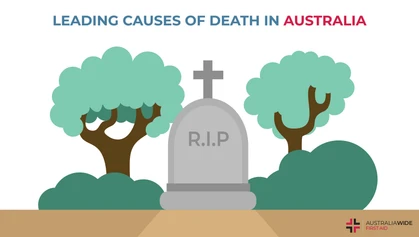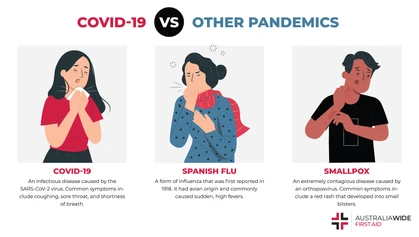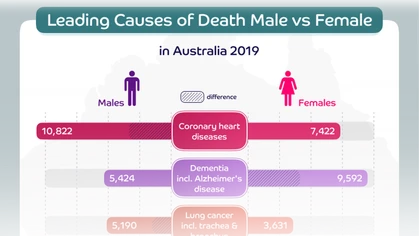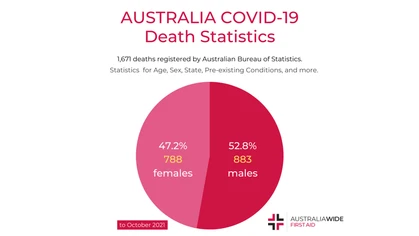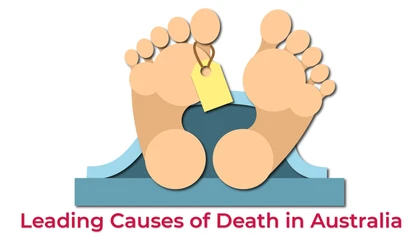Heart, Stroke & Vascular Diseases Statistics

Health Statistics
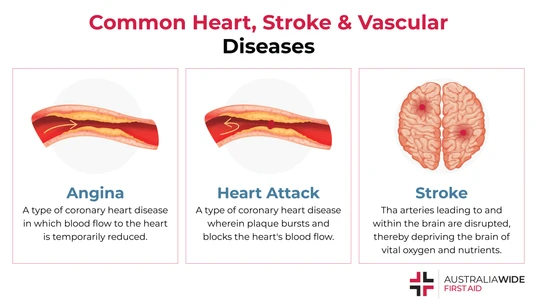
Heart, stroke, and vascular diseases (or cardiovascular disease) is an umbrella term for a wide variety of diseases that affect the heart and blood vessels. Statistics show that cardiovascular disease accounts for a significant number of hospitalisations and deaths in Australia.
Heart, stroke, and vascular disease is an all-encompassing term for the group of diseases and conditions that affect the heart and blood vessels. These are also referred to as ‘cardiovascular disease’ or ‘heart disease’. Cardiovascular disease is commonly caused by atherosclerosis. This is the slow build-up of plaque on the inner lining of arteries as an individual ages. The build-up of plaque reduces or inhibits the blood flow to key organs, which can result in serious events such as angina, heart attack, and stroke. An individual is classified as having a heart, stroke, or vascular disease if they have been notified by a health professional that they have any of the following circulatory conditions:- Angina and heart attack (coronary heart disease)
- Stroke (Cerebrovascular diseases)
- Oedema
- Heart. Failure
- Artery, Arteriole, and Capillary Diseases
Types of heart, stroke and vascular disease
The most common forms of cardiovascular disease in Australia are coronary heart disease, stroke, and heart failure.Coronary Heart Disease
According to the Heart Foundation, coronary heart disease occurs when there is a build-up of plaque within the arteries that supply blood to the heart. This build-up reduces the flow of blood to the heart and can result in one of two forms of heart disease: angina or heart attack:- Angina is when the flow of blood to the heart is temporarily reduced, causing pain, pressure or tightness in the chest or other body parts.
- A heart attack occurs when the build-up of plaque bursts, which causes the coronary arteries that supply the heart to become blocked. This requires immediate medical treatment to restore blood flow to the heart.
Stroke
A stroke is a form of cerebrovascular cardiovascular disease, which affects the arteries leading to and within the brain. A stroke occurs when the brain cannot receive oxygen and nutrients that are carried within the blood due to a blocked or ruptured artery. There are 3 types of strokes:- Ischemic Stroke: caused by a blocked blood vessel
- Haemorrhagic Stroke: caused by a ruptured blood vessel
- Transient Ischemic Attack (ITA): a temporary clot that prevents blood flow to the brain
Heart Failure
Heart failure is the result of damage to the heart that causes it to no longer pump correctly. This can result in the heart becoming bigger, weaker, or stiffer and in turn, causing tiredness, shortness of breath, and reduced ability to participate in physical activity. Heart failure can be caused by a heart attack, high blood pressure, or heart valve issues.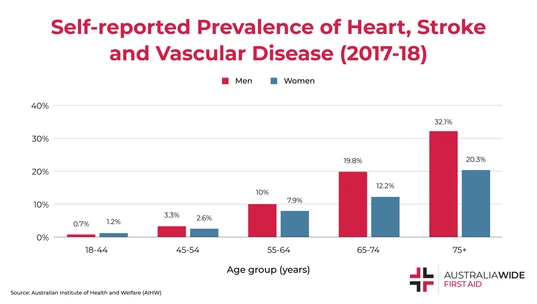
In 2017-18, self-reported data to the AIHW showed that almost one-fifth of men in Australia aged between 65 and 74 had 1 or more conditions related to heart, stroke, or vascular disease.
What is the prevalence of heart, stroke, and vascular diseases in Australia?
According to the Australian Bureau of Statistics, in 2018-19 approximately 1.2 million Australian adults, or 4.8% of the population, had a form of heart, stroke, or vascular disease. In 2018-19, 591,000 Australians were hospitalised in Australia with cardiovascular diseases as the primary diagnosis. This was a significant increase compared to 2000-01 where there were 530,000 hospitalisations. Since 1980, the rate of deaths in Australia due to cardiovascular disease has dropped by 22%. However, cardiovascular disease is still one of the major causes of death among Australian adults, accounting for 25% of all deaths in 2019. The Australian Institute of Health & Welfare (AWHW) determined that of the 43,200 deaths:- 43% were due to coronary heart disease
- 20% were due to stroke
- 11% were due to heart failure
What is the prevalence of heart, stroke, and vascular diseases in Australia, according to gender?
An important factor that determines the prevalence of heart, stroke, and vascular diseases is gender. According to the AIHW, in 2017-18 there was a higher prevalence of cardiovascular disease among men, at an age-standardised rate of 6.5% compared to women, who had a low age-standardised rate of 4.8%. According to the AIHW, the rate of hospitalisation for cardiovascular disease was 1.4 times higher for males compared to females across all age groups in 2018-19. When looking at the trends of hospitalisations, both males and females have seen decline by up to 13%. Similar to the hospitalisation rates, the cardiovascular death rate for males is 1.4 times higher than for females. This increased mortality rate is also seen within all age groups.What is the prevalence of heart, stroke, and vascular diseases in Australia, according to age?
Generally, the risk and prevalence of heart, stroke, and vascular disease increases with age. The AIWH reports that in 2017-18, Australian adults under the age of 55 years old made up only 5% of the proportion of the population with cardiovascular disease. This number steadily increases up to 26% once Australians reach 75 years or older. This increase in prevalence can be seen in the number of hospitalisation due to cardiovascular disease in 2018-19, which drastically increases to 83%, once over the age of 55 years old. The highest rate of hospitalisations among older Australians is for adults 85 years and older, with males in the age group 1.4 times more and females 1.6 times more likely to be hospitalised due to a heart, stroke, or vascular disease. Unsurprisingly, 52% of all cardiovascular disease deaths in 2019 occurred among Australian adults who fell within the age group of 85 years and older. This age group also accounts for the highest rate of cardiovascular disease-related death among both males and females.What is the prevalence of heart, stroke, and vascular diseases among Aboriginal and Torres Strait Islander people?
In 2018-19, the ABS self-reported data showed that 42,700 Aboriginal and Torres Strait Islander adults had a form of heart, stroke, or vascular disease. When adjusted for different population age structures, the rate of cardiovascular disease amongst Indigenous adults is two times higher, at 11.4%, compared to non-Indigenous adults, at 5.4%. Within jurisdictions with sufficient Indigenous identification, the rate of death of Indigenous adults in 2018-19 due to cardiovascular diseases was 1.8 times higher than non-indigenous adults. Comparably, the rate of hospitalisation for Indigenous adults due to cardiovascular disease was 1.7 times higher than non-indigenous adults in 2018-19.Conclusion
Heart, stroke and vascular diseases broadly refer to diseases affecting the heart and blood vessels. They account for a significant number of hospitalisations and deaths in Australia, among both Indigenous and non-Indigenous populations. To avoid becoming another casualty of this health epidemic, take care of your heart health by: reducing your consumption of alcohol, eating heart-healthy foods, and exercising regularly. You can also find out more about the risk factors and signs of stroke by checking out the National Stroke Foundation and their annual awareness campaigns, including National Stroke Week. And to develop the skills and know-how to assist those in a health crisis, book a First Aid course with us today.Sources
- "Heart, stroke and vascular disease - Australian facts", Australian Institute of Health and Welfare (AIHW)
- "Heart, stroke and vascular disease", Australian Bureau of Statistics (ABS)
- "What is heart disease?", Heart Foundation
Originally published at
https://www.australiawidefirstaid.com.au/resources/heart-stroke-vascular-diseases
as part of the Australia Wide First Aid Articles Library


